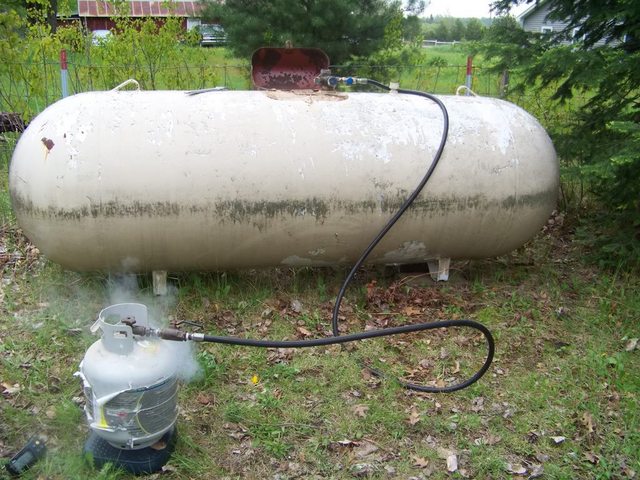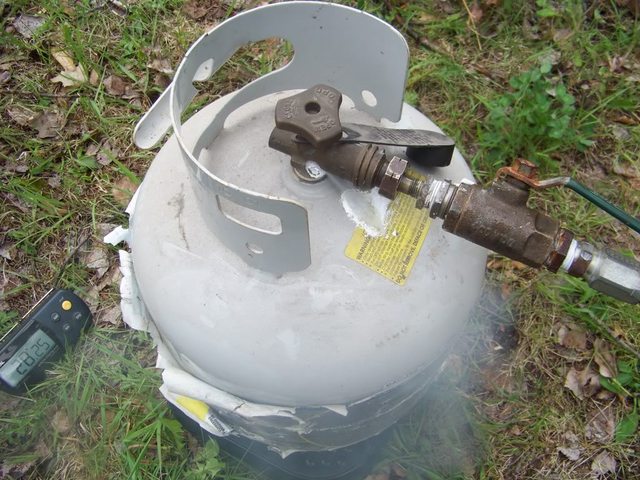I don't think of the building as a defensive position so much as a shelter point that could be used to protect the elderly, frail, and mothers with small children. Keeping them accounted for, dry, and supplied with water and sanitation. In case of natural disasters, the junior high gym basement, being designed from the ground up as a fallout shelter, is ideal.
If mob violence were the problem, I'm sure plans would be made to prevent said mob from ever reaching that building. The entire school is of brick and block construction, and while it could be burned from the inside, it is also somewhat defensible using other elevated positions in the town.
Yep.
That is referred to as a layered defence.
Layered defence is easier to do with a bunch of trigger pulling helpers - but it can also be done relatively shorthanded - if you have the knowhow and some key resources/materials.
Some General thoughts on security.....
During the expected "dying time" of any very severe crisis (WROL), you can avoid being over-run with some combination of the following:
1) Effective concealment - don't get found
2) Effective deterrence - look like you are hard enough to not be worth trying to crack
3) Effective detection - of the approach of enemy - to ensure you have all defenders "standing to" before any attack
4) Effective delay - until they get hungry, worn down or otherwise have to give up or;
5) Effective response - the cavalry arrives to harass the bad guys or just make them fight on two fronts
Regarding Defensibility of a Dwelling or Homestead
Each person will define/assess that differently through the lens of:
1) Their expectation of security threats in some particular scenario
2) Their knowledge of potential defensive measures that may be applied to some fixed position and specifically to a BOL
3) The capabilities of the material resources and people that they will have available
4) Their knowledge of offensive tactics and capabilities that may be applied against them
5) Historic SHTF scenarios and what people did to defend themselves (eg Rhodesia farmers) - and how effective those measures were.
Threats
To me, where the ROL is gone, unprepared people are starving and some individual or group of people (a family unit or larger) are living in a well resourced BOL, it would be important to be able to defend that group - ideally without any reliance upon help coming from the outside (because, while networks are great, they may not be reliable - especially if yours it not the only place under direct attack). Attackers may have superior numbers, military style small arms, soft skinned vehicles and military experience (there are lots of vets out there and most are not preppers).
Defensive Measures
Defensive measures may include:
1) Topography of BOL site - high ground with good command of the surroundings in all directions (out to typical small arms effective range of say 800m), absence of any dead ground that cannot be seen/covered from the BO dwelling/structure
2) Vegetation - cleared area (devoid of concealment or cover for an attacker to the same 800m distance)
3) Limited (single?) and well covered potential paths for approach by vehicles - use of barriers/obstacles to slow down vehicles to make them vulnerable to small arms fire
4) Use of detection devices to alert of any approach (foot or vehicle)
5) Use of wire and other linear obstacles (that act as barriers but do not provide concealment or cover) to funnel any approach into enfilade fire lanes
6) Use of rapidly expanding devices to clobber funnelled concentrations
7) Inner perimeter fence or wall around dwelling buildings/yard - using wire, sandbags, earth bunds, shipping containers, hesco bastion bags etc
8) Hardened walls, windows and doors on BOL/dwelling buildings that may use sandbags, steel plate, concrete, stone or thick timber to enhance cover - note that even concealment makes it harder to hit defenders - because they don't
when to shoot
where to get hits
9) Watch towers to elevate sentries, provide covered fire positions and eliminate any dead/shadow zones adjacent to inner perimeter walls etc
10) Covered paths or trenches between buildings and watch towers to allow safe movement between structures and reinforcement of sectors under attack
Resources/Capabilities
1) What guns do we have, how far can they effectively shoot things, how much firepower can they put out (and for how long), will they stop vehicles and how much ammo do we have?
2) How well can our people shoot?
3) How will our people perform under fire - are they experienced?
4) What happens if we are besieged? How long can we remain behind cover?
5) If we have people who are capable of offensive patrolling, how large of an area can we effectively dominate?
6) If we are going to send out patrols, do we have enough other people to act as a Quick Reaction Force to rescue the patrol if they get pinned down or take casualties and cannot exfil/break contact on their own?
7) Do we have an E&E plan for if we are overwhelmed?
8) Can we see in the dark?
9) Do we have enough people to cover sentry duty 24/7?
10) Do we have the resources to care for casualties - How many casualties can we absorb without losing defensive capability?
How well will we know our enemy/attackers?
1) Do we have a good intel network for our area
2) Will we get early warning from neighbors?
3) Do we have remote sensing devices like drones/night vision/thermal/PIR/cameras?
4) Will our patrolling include stealthy observation posts and recon patrols?
5) Do we have adequate and secure radio comms
6) Can we listen to enemy comms
Military Defence - in the field
1) Recon patrols - small, stealthy and lightly equipped - just out there to get information and report that back
2) Observation Posts/Overwatch Positions - semipermanent concealed positions often on high ground watching likely paths of approach
3) Ambush patrols - to destroy enemy before they get close
4) Fighting patrols - to destroy the enemy in their temporary bases - the best form of defence is often attack - particularly where it gives you the element of surprise and selection of the ground
5) Wire, mines, traps - to demoralize and harass
6) Pits, trenches, bunkers, sandbags, hescos, towers, concrete
Historic Civilian Methods Used
I have known several Rhodesian expats/refugees and I always took the opportunity to question them about what they did to defend their farms and how well it worked. All were pretty open once you showed you could think up sensible questions. While many published accounts focus upon what they actually did at their farm houses, the system that defended them was much more widespread and complex. They relied upon good intel from nearby villages and response from those same villages and the police, army and neighboring farms. In some ways, the farm house defences were just expected to delay the bad guys long enough for help to arrive.
They all made the point that as that response capability degraded towards the end of the war, so did their ability to fight off farm attacks.
Defensibility can be traded off against remoteness and concealability. It may be that some BOL that is not either remote enough or well enough concealed may be almost impossible to make adequately defensible without military resources or a big community group (that then can only be relied upon for as long as you can keep them fed).
If that is where you live, then you will need a good mobility capability to put distance between you and threats (if and when they arrive).



































